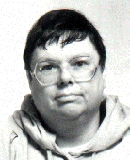 We all know what a college algebra course is. So I assumed. As chair
of the MAA's CUPM Subcommittee on Quantitative Literacy, I had been
approached by the CUPM chair, Tom Berger, concerning precalculus
mathematics reform. College Algebra is precalculus mathematics and was
the focus of many discussions and presentations at the recent annual
meeting in Washington.
We all know what a college algebra course is. So I assumed. As chair
of the MAA's CUPM Subcommittee on Quantitative Literacy, I had been
approached by the CUPM chair, Tom Berger, concerning precalculus
mathematics reform. College Algebra is precalculus mathematics and was
the focus of many discussions and presentations at the recent annual
meeting in Washington.
I went to the first discussion comfortable with the definition of the course taught at Macomb Community College. This course presents functions and their graphs, polynomial and rational functions, exponential and logarithmic functions, and special topics. I sat up and took notice when the first speaker said college algebra was a prerequisite for precalculus. Our course together with trigonometry is the prerequisite for calculus. The course descriptions I continued to hear had much in common with our Intermediate Algebra course where we also consider functions.
This fuzzy definition is a problem only when students move from one institution to another. Unfortunately this is quite common for two-year college students. Therefore, some students who have taken college algebra and trigonometry might be required to take precalculus where they would have gone straight to calculus at the college of origin. Other students may not be able to transfer statistics, math for elementary education, and other courses because the receiving institution has a college algebra prerequisite even though the Intermediate Algebra of the sending college is a similar course.
Several years ago MichMATYC tried to establish statewide topic outlines for Beginning and Intermediate Algebra courses. They did establish a baseline set of topics with several optional areas. Here we are again.
Whether or not college algebra is "reformed" in the near future, there is still an issue: Do we need a common definition for college algebra or a willingness to consider syllabi over course title?
Barbara Jur, Two-Year College Vice Chair